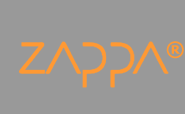Interactive observation
This attitude of the psychomotoric therapist has to be established in the first meeting with the child for observation and remain constant throughout the therapeutic process. If the attitude, that it is not the therapist who knows the solution but the child, is taken seriously, then the attitude towards the child changes drastically. The psychomotoric therapist is proceeding on the assumption that the child is able and competent to find a solution for a change in her behaviour. Such working attitude obviously rules out the classic diagnostic method with children, in which emphasis is on deficits and lack of abilities: because it's sole aim is to tell the child how she has to change!
The psychomotoric theory by Aucuoturier focuses on an interactive observation to get insight into the child's life and present circumstances.
»In my work with children it is essential, not to treat them as patients and assess their needs according to diagnostic criteria…the focus is not on diagnosis but on the attempt to establish an interactive dynamic, in which the child can pluck up the courage to interact with the world and people again… the only important thing is to help the child to believe in herself again; using the support of a sound relationship, in order to learn how to deal with her impairment… ( Esser, 1992, p.65)«
This means that the psychomotoric therapist does not observe and assess the child from a distance, but immediately involves herself in a tonic-emotional interaction with the child; the therapist as a physical person is directly involved. The quality of this developing relationship is the medium through which the child takes the plunge to communicate and build up trust. The way we welcome a child ( l'accueil), we listen ( l'ecoute), we understand ( la comprehension) and how we accompany the child ( l'accompagnement) is decisive, if we want the child to tell us her history, experiences and pain. Only a real and authentic, tonus and emotion based relationship, makes this process possible. Bernhard Aucutourier calls this the »tonic-emotional resonance« between therapist and child.
»The purpose of this interactive observation, which manifests the first encounter between therapist and child, is to listen to the child's individual way of expression and to find a mutual level of communication and verbal interaction. This will help the child to slowly express her needs and anxieties - her motivation to move- on a symbolic level. The interactive observation is the basis and the start of understanding the child's inner experiences and processes «( Bortel, unpublished document on interactive observation, soon to be published in : Praxis der Psychomotorik , August 2001) .
It is not only the relationship that helps the child to express herself but also the stable and consistent environment which gives her a feeling of security. A part of this secure environment is the psychomotoric space, with its divided areas of motoric expression and symbolic representation. Additional security comes from clear communication with parents about how long the sessions will be, how often they will take place, and the length of intervals between the child's attendance at the psychomotoric sessions.
Generally children attend the psychomotoric session about once a week for 45- 60 minutes. Two to three observational sessions are normally planned.
During the first observational session the aim is to establish a relationship between the therapist and the child, whereas the second and third sessions aim to collect information about the deeper meaning of the child's behaviour. How does the child move around in the room? Is she active? Is she able to relate to the therapist? Is the child revealing her anxieties and phantasms? Can she overcome her anxieties or is she overwhelmed by them? How does she express herself through her own body, language and drawings or constructions?
As I have mentioned in »Beweggruende« (Esser, 1992, p.55), the therapist is adressing these questions to get a better picture of the child's individual means of expression. Special attention is directed towards the dynamic of change in these first sessions. Does the child change tonus and emotions and is she flexible in her play behaviour and actions? Or is she fixated on certain games and movements? If no change can be detected, it could be an indication that the child's defence mechanisms are so strong, that individual therapy should be arranged. Therapists should also consider about her own relationship with the child. Can she accept the child? Does she have feelings of rejection or overprotection for the child? Can she deal with the subject matters projected on to her by the child? Has she reacted appropriately to the child's physical and linguistic ways of expression? During interactive observation there is no hierarchical order between therapist and child, on the contrary the therapist is as a person actively involved in the process. As previously explained, only a therapist who is willing to be transformed by the child can facilitate the child's development and changes!
By asking these questions in the first few sessions the therapist hypothesises about the child's history and situation. In conversation with the parents the therapist will communicate her observations. It is important that the therapist is flexible enough to listen to observational reports by parents, carers, teachers, etc. and not only take her own observations as valid. It is important to establish that the view of one party is not »more right« than another, to get a comprehensive and diverse picture of the child. That is why we try to involve as many people, who play a part in the child's education and upbringing as possible.Together a new understanding of the child can be developed, not only focusing on her deficits, difficulties and problems. As Sartre said: »Man constitutes himself through the eyes of the other.« Therefore a healthy relationship focuses on the child's skills, abilities and capabilities!
